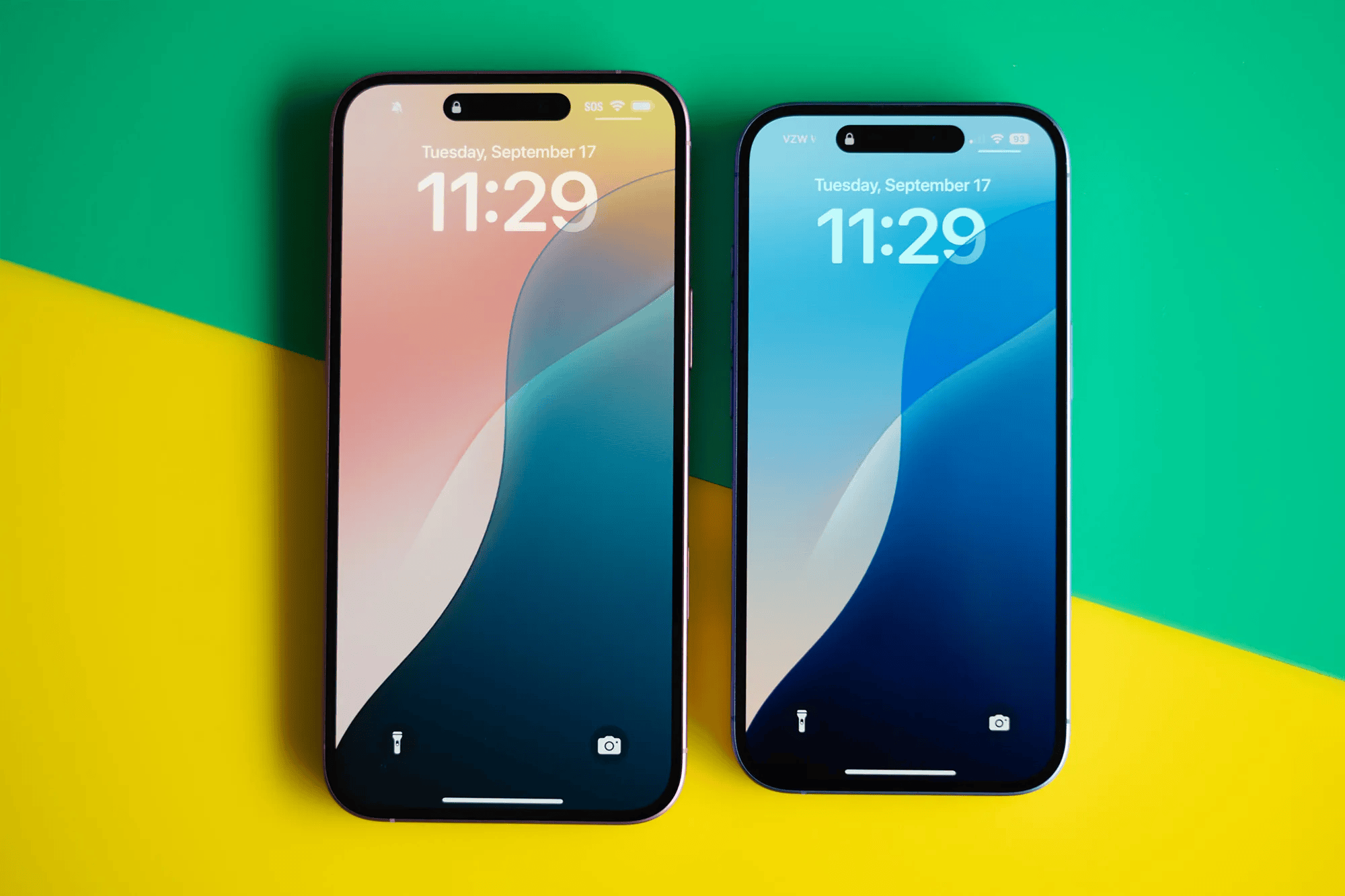
How VoIP Software Benefits Sales Teams
 Updated on
Updated on
 By Rob Marquez
By Rob Marquez
Rob Marquez
Originally from Southern California, Rob moved to Denver over 4 years ago to join the Ringy team as a Mobile Engineer. Rob received his BS and MS in C...
learn more
Rob Marquez
Originally from Southern California, Rob moved to Denver over 4 years ago to join the Ringy team as a Mobile Engineer. Rob received his BS and MS in C...
Table of Contents
Table of Contents
It's 2006. You have a sweet Motorola Razr flip phone, a crisp, clean suit, a company-issued laptop (weighing in somewhere around 5 pounds), and one of those internet sticks that barely work.
Your voicemail is full (because it could only hold like 10 messages), and you need to process a transaction for a client, but good luck trying to find a stable internet connection. Meanwhile, you forgot to forward your desk phone to your cell phone, so you're missing sales calls.
Imagine still working like that today. Thanks, but no thanks. These days, sales teams need to be connected, jump on leads quickly, and make data-driven decisions with easy-to-access data sources.
That's where VoIP comes in to save the day.
Sales teams are more productive, make more sales, and are overall more efficient with everyday operations when they have access to a VoIP software system.
If you haven't taken the plunge into the refreshing pool of VoIP, you better change into your swimsuit and climb that diving board ladder, because, after this, you'll be ready to jump.
Introduction to VoIP Software
Before VoIP, businesses used analog landline systems, or POTS (Plain Old Telephone Service), which were costly and required extra hardware and software for features like voicemail, caller ID, and call transfers.
With faster internet connections, VoIP emerged as the next step for business communication, enabling calls from computers or smartphones with modern features at little to no cost—and no special hardware needed for the recipient.
VoIP software often integrates with CRM systems for streamlined communication management but can also be used independently. This article explores VoIP when paired with a CRM and highlights features available in standalone VoIP software.
What is VoIP Software?

VoIP calling software allows you to make and receive calls over the internet. The calling may be internet-based, but the experience is similar to making calls on your phone with a full dialer and contact list through softphone software. VoIP calling software is installed on your computer, accessible through a web browser, or accessible through your phone or other mobile devices through an application that you would download on your phone's app store.
What is a SIP Softphone?
A SIP (Session Initiation Protocol) softphone is the software on your computer that allows you to make voice calls, video calls, and text messages—typically complete with a dialer and display module similar to what you'd see on a traditional handset.
While VoIP is the technology behind the calling, SIP is the protocol or set of instructions that signals voice, video, or text messaging communications to be initiated, terminated, and maintained.
SIP softphone software can be integrated with popular web communication clients like Zoom. Microsoft Teams, and Skype.
Open Source vs. Proprietary Softphone
As with anything that has proprietary or open-source options, there are pros and cons to choosing either, and which is better is subjective and will depend on your business needs. Below is a brief detail of the open source and proprietary softphone before we compare them further:
- Open Source Softphone: Open-source softphones are typically free to use and allow businesses to access and modify the source code to meet their specific needs. This flexibility is ideal for companies with in-house technical expertise, as they can customize features, fix bugs, and improve functionality without relying on external support.
- Proprietary Softphone: Proprietary softphones are commercial solutions developed and maintained by a specific company. These software options usually come with comprehensive customer support, regular updates, and robust security features.
Now, let's look at some of the pros and cons of open source vs. proprietary softphone.
Open Source Softphones
|
Pros |
Cons |
|
Open standards
|
Less convenient user support
|
|
Customizable
|
Varied user experience
|
|
Easy to get up and running
|
Ongoing software support
|
Proprietary Softphones
|
Pros |
Cons |
|
More uniform user experience
|
Closed Software
|
|
Better support
|
Dependency
|
|
Product stability
|
Cost
|
Top 5 Benefits of VoIP Software

1. Low Cost
While traditional phone systems are synonymous with long-distance charges and a cost associated with any additional features, a VoIP system eliminates long-distance charges for the most part (at least with calls in Canada and the United States) and includes features like caller ID, call forwarding, voicemail, and more at no extra cost.
There are a lot of statistics online surrounding cost savings for small businesses that switch to VoIP, ranging from a 30% reduction in call-related fees to up to 85%.
We have tons of testimonials from customers who noticed huge cost savings once they switched to Ringy—read about them here.
The primary need for a VoIP system is high-speed internet, and most smaller businesses need minimal or no additional equipment to get VoIP software up and running. You can consider purchasing additional hardware like VoIP desk phones, headsets, speakers, etc. as needed.
2. Voice, Video, and SMS on One Platform
VoIP can handle voice and video calls, SMS, and more directly on your computer or smartphone, through one system. No more switching back and forth from your computer to smartphone and vice versa—instead, you can focus on using the most convenient tool for getting the job done.
3. CRM Integration
CRM integration helps manage your workflow better by giving you greater insight into your leads by streamlining communications to one place. Typically, all information about leads can be viewed on a dashboard.
Think about how a lead would reach a sales rep and how they could connect with that lead as fast as possible.
Here's an example: marketing creates a landing page on your website with a lead fill form. A visitor to your website fills in the form, sending their information to the CRM. From there, the CRM recognizes that a new lead has come through and assigns that lead to a salesperson to follow up with. The salesperson gets notified through the CRM that a new lead has come through, and they can call them immediately through the built-in VoIP softphone.
4. Full Mobility
Salespeople on the go? No problem. Pretty much every VoIP service—Ringy included—offers a free mobile application download for VoIP service on Apple or Android. All of the same features that you enjoy on the desktop version of the VoIP application are usually available on mobile, helping you stay productive and available even when you're away from the office.
5. Integration with Business Applications
Integration with popular business tools like Outlook, Gmail, Google Workspace, and more ensure that your VoIP service works with you and the tools you already use for your business.
Ringy, for instance, integrates with Google, Facebook, and Zapier for even more integrations.
Best VoIP Software Features Across Industries
While sales are similar across different industries, the features, and benefits that you're looking for in VoIP software and CRM might differ depending on whether you're an insurance salesman or work in a law firm. Sometimes, different industries look for specific features in VoIP software that cater to them because their business is so specialized.
While most salespeople can take advantage of the CRM features we list below, we specifically highlight insurance and law as examples of two industries where unique CRM features are often sought after.
|
Industry |
Key Features |
|
Insurance |
|
|
Law Firms |
|
|
General Sales |
|
VoIP Software Features for Insurance
- Booking software for Verification calls
With insurance, underwritten products require an underwriter to call a client for
verification purposes. Sometimes the insurance salesperson making the call to the customer are unable to do this themselves, so Ringy offers an appointment booking solution where the salesperson can book a time that works with the underwriter's schedule so the underwriter can call the customer back to perform the verification process. Ringy includes this feature in our CRM + VoIP solution.

- Call recording
Call recording is an essential feature for those in the insurance industry. Not only does call recording provide a great way to train new reps, but it allows you to go back and listen to a customer conversation to ensure all your bases are covered when offering them products or counsel.
- Never miss a call
In insurance, you never want to miss the opportunity for a sale. Look for a softphone that has flexibility with a mobile application, call forwarding, and other call management features that maximize productivity. Below is a screenshot showing this feature in Ringy.

VoIP Software Features for Law Firms
Most law firms charge clients by the hour, so it's important to be able to track the length of calls and other conversations like text messaging. Here's a screenshot of this feature in Ringy.

- Fax capabilities
Many law firms still rely on faxing as an approved method of sending documents. But that doesn't mean they are sent on traditional fax machines; VoIP software and CRM integrations allow for virtual faxing, also known as eFax.
8x8 is an example of a VoIP phone and CRM system that includes efaxing capabilities in its premium plans.
- Inbox for voicemail, faxes, and call logs
When you're receiving tons of communications from different sources all at once, it can be difficult to keep track of it all and not miss a beat. VoIP software and CRM system that filters voicemail, faxes, and call logs to one dashboard location where they are easily viewable is key to busy lawyers keeping things organized.
Ringcentral is an example of a VoIP phone and CRM system that has efaxing capabilities and an intuitive dashboard interface where all communications can be viewed at once.
VoIP Software Features for General Sales
- Click-to-call software
Busy sales teams are always looking for ways to make the selling process more efficient, and click-to-call is one of those features that once you have it, you'll wonder how you ever lived without it. Instead of manually dialing a number, you simply click a button and call it instead. It might not seem like a big deal, but when you're dialing hundreds of numbers a day manually, it'll save your fingers!
- Local phone numbers
Research shows that people are four times more likely to answer calls from a local number, so it makes sense that salespeople would want to find a way to connect with prospects with a local number to increase answer rates. Ringy's softphone has a built-in way to get numbers from local areas called smart local ID, so it's easy to select and use a local number before you make a call or send out an SMS.

- Sales pipeline dialing
If you make a lot of calls to leads, organization is key to keeping track of the status of those groups of leads. Ringy provides a calling feature called sales pipeline dialing, which allows you to sort leads into “buckets”. For instance, you can sort leads by the length of time they've been available (day 1 leads, day 2 leads, etc.) or by other criteria like if they've received a quote. Once the leads are in a bucket, they can be called individually or through a sequence, saving a lot of time and making sure each lead gets called.

Implementing VoIP Software in Your Business
Successfully implementing VoIP software in your business requires careful planning, the right tools, and thorough training. Below, we outline the key steps to ensure a seamless transition to VoIP technology, maximizing its benefits while minimizing disruption.
1. Choosing the Right VoIP Solution
Selecting the best VoIP software starts with assessing your business's specific needs. Consider factors like company size, daily call volume, and required features—such as call recording, eFax, or local phone numbers.
For small businesses, a free softphone or a basic VoIP tool might suffice, whereas larger organizations may need advanced call-logging software or an open-source softphone for customization.
2. Setting Up Hardware and Software
Proper implementation involves equipping your business with the necessary tools. Basic requirements include high-quality headsets for clear audio, reliable routers for stable internet connectivity, and a VoIP software phone or SIP softphone for managing calls. Make sure your hardware is compatible with your chosen VoIP solution to avoid technical issues during setup.
3. Training and Onboarding
To ensure your team effectively uses the new system, provide comprehensive training on VoIP number functionalities and best practices. Employees should be familiar with features like click-to-call, voicemail management, and security protocols. A well-trained team can significantly boost productivity and enhance customer interactions.
4. Security and Compliance Considerations
Protecting sensitive data is critical when using VoIP software. Look for VoIP solutions that offer encryption, secure servers, and compliance with industry regulations, such as GDPR or HIPAA, depending on your business sector. Regularly update software to patch vulnerabilities and ensure your VoIP setup remains secure against potential threats.
Summary and Key Takeaways

VoIP software with an integrated CRM is part of a standard tech stack for all types of businesses, from insurance to law to general sales. Salespeople who have access to a VoIP software solution are more productive, organized, and can close sales quicker and easier.
Open source versus proprietary softphone software
An open-source softphone solution might be better for you if you intend to take the software and heavily customize it to your business's unique needs. It also might be a better option if you have knowledgeable onsite or offsite IT support that can diagnose and solve any issues quickly.
In contrast, proprietary softphone software might be the better option if you are looking for ready-to-deploy software, and have limited IT support and want a softphone solution where technical issues can be diagnosed immediately.
Benefits of softphone software
The main benefits of softphone software are cost-effectiveness, all communication types on one platform (voice, video, SMS), the ability to use the software on your computer or smartphone, and the ability to integrate the softphone software with other business applications, like CRMs and email, document, and project management software.
If you're convinced that a softphone is the way to go to help your salespeople be the best that they can be, don't hesitate to book a demo with Ringy to get a full overview of both the VoIP software and CRM features.

Skyrocket your sales with the CRM that does it all.
Calling? Check. SMS? Check. Automation and AI? Check. Effortlessly keep in touch with your customers and boost your revenue without limits.

Take your sales to new heights with Ringy.
Sales in a slump? Ringy gives you the tools and flexibility you need to capture leads, engage with them, and turn them into customers.
Subscribe to Our Blog
Enter your email to get the latest updates sent straight to your inbox!
Categories
Related Articles















.jpg)



.jpg)
.jpg)












































